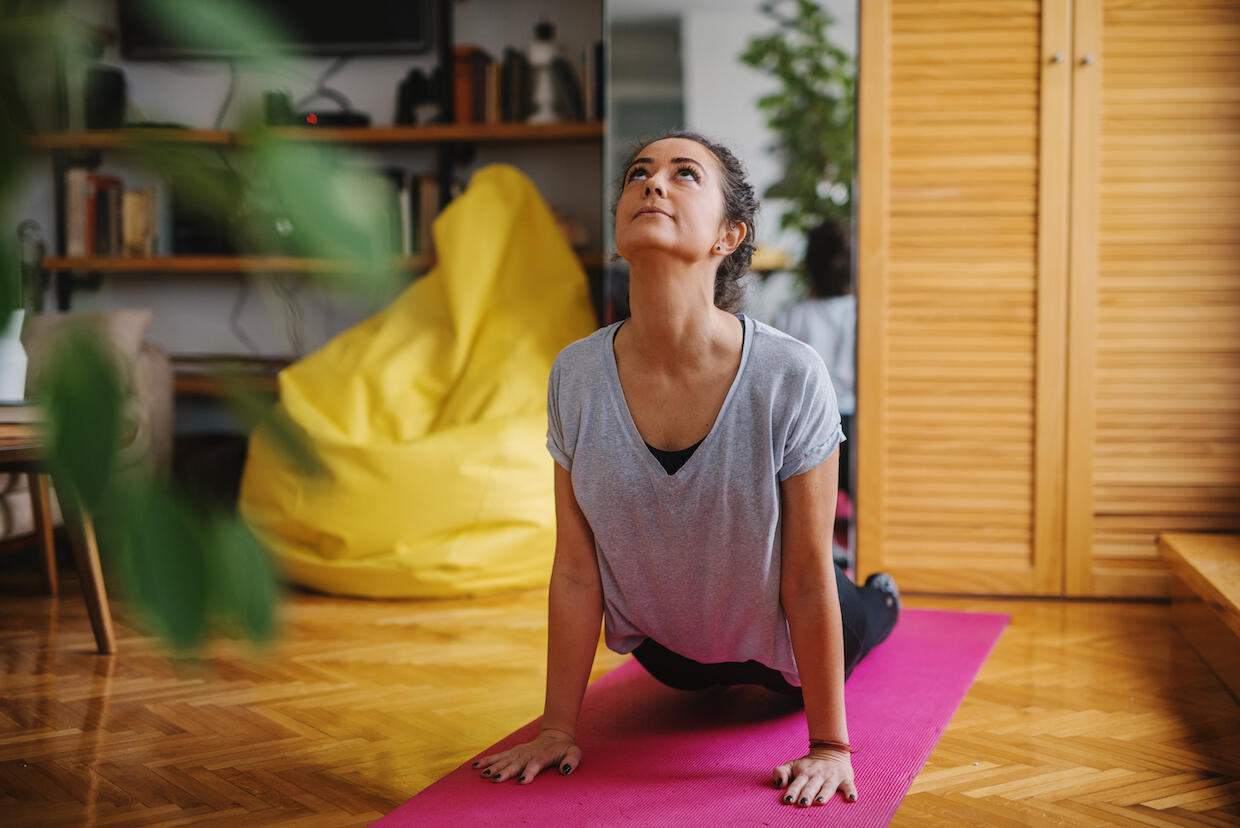
March 27, 2020
6 tips to improve your health while teleworking during the coronavirus outbreak
Ryan Garten conducts research on prolonged sitting and cardiovascular health, and offers steps to avoid developing back and neck problems.
Share this story
With everyone’s work routine rapidly changing, moving from the office to home during the COVID-19 outbreak, it’s important to make sure you are working with your health in mind.
One of the worst work habits is prolonged sitting, said Ryan Garten, Ph.D., an assistant professor in the Department of Kinesiology and Health Sciences in the College of Humanities and Sciences at Virginia Commonwealth University.
“Sitting is the worst possible thing you can do when you take large data research into account,” Garten said. “It’s now considered worse than smoking.”
Sitting in front of the computer or at a desk for prolonged periods can cause muscle imbalances in your body, the most common of which are in the back and neck, Garten said. He has been conducting research on prolonged sitting and cardiovascular function, looking at how to mitigate the effects of prolonged sitting and to understand how sitting affects cardiovascular function in the lower legs.
Based on his research, Garten offers the following tips to improve your work habits at home:
Get your laptop in the right position
If using a laptop, try not to have it in a position that requires you to look down, Garten said.
“You can start having neck issues,” he said. “If you have a laptop or desktop, you want to look at the screen at eye level. Set it up to where the middle is lined up with your eyes.”
Treadmill desk? Take care of your feet
Anyone working with a treadmill desk should keep the speed of the treadmill at 1 to 1.5 mph when working on the computer.
“If you have a standing desk, make sure you are wearing good footwear and/or standing on a softer surface such as carpet,” Garten said.
Move around
Don’t sit for more than 60 to 90 minutes at a time, he said. Get up and take breaks. You need at least 10 minutes of movement. Walk around the house or outside.
“If you are sitting all the time, you will start to develop neck and back issues,” Garten said. “The impact of doing a little physical activity has been shown to easily reverse the negative impact of these 60- to 90-minute bouts of prolonged sitting. Those 10 minutes can help you wipe your slate clean.”
A workday yoga routine
Garten recommends checking out YouTube for videos on yoga poses that can help people who sit all day, such as this video from the Huffington Post.
“Some of the moves, such as the downward dog, cobra and cat-cow, are fantastic for your back,” Garten said. “This can also incorporate deep breathing, which is very beneficial for mental and physical health.”
Mind your posture
When working at a desk, keep yourself in a normal posture. You don’t want to lean forward or change posture in any way, Garten said. And if you are up for some cardio, try an under-the-desk mini-exercise bike.
“It works great,” Garten said.
Remember, your diet plays a role
Antioxidants can be beneficial to people who sit for long periods, Garten said. You want to consume fruits and vegetables that are high in antioxidants such as raspberries, blueberries, strawberries, broccoli, spinach, carrots and sweet potatoes. Green tea also contains high concentrations of antioxidants.
Subscribe to VCU News
Subscribe to VCU News at newsletter.vcu.edu and receive a selection of stories, videos, photos, news clips and event listings in your inbox.










